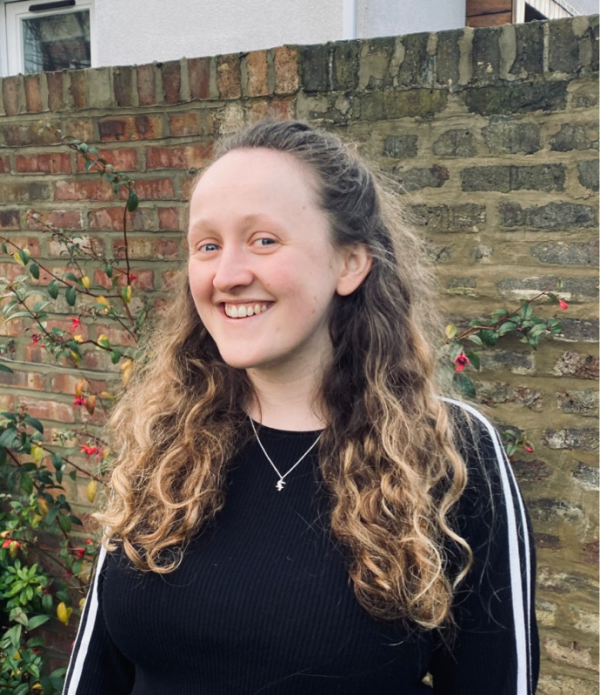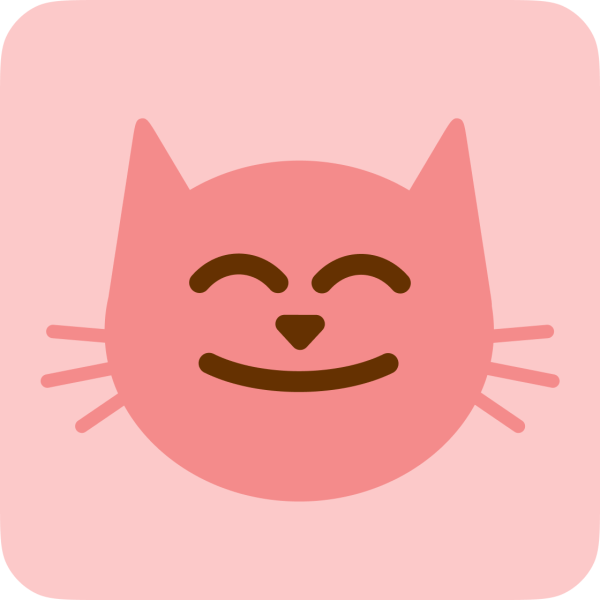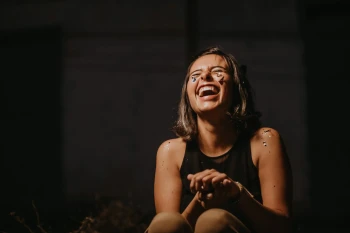© Pint of Science, 2024. All rights reserved.
"How do you tell a child they have cancer?"
No one ever wants to tell a child they are sick, and receiving a diagnosis of cancer can be especially devastating. Due to the complex biology and painful treatment plans, it can be difficult for a child to understand what it means to have cancer.
Samantha Hodder, a third year PhD student funded by Cancer Research UK at the University of Cambridge, has developed an app to help children with cancer learn about their disease and help understand their treatments.

Samantha Hodder - “I love studying cancer biology but what I really like is the impact our research can have.”
Chum, named for the idea that children will have a virtual friend, is an app designed to help children with cancer learn about their illness and medical care through storytelling and play. When children log on, they pick a virtual “Chum” who will stay with them throughout their journey. Their chosen chum will guide them through various scenarios aimed to explain their current symptoms or the treatments they may be receiving in an engaging and reassuring way.
Inspiration behind the design
As part of her degree programme, Samantha shadowed paediatric consultant Dr Amos Burke for two weeks and noticed how difficult it can be for children to understand why they have to go through treatments.
“Explaining cancer to a child is incredibly challenging, as it is a disease with complex biology and treatment regimes. Children are very scared and anxious and are often resistant to having treatment because they don’t know what is going on.”
“The children only have a couple of educational videos and doctors, but the doctors aren’t there all the time. There needed to be something to fill the gap.”
“The parents were also asking so many questions and having to relay it back to the children. Chum can help facilitate the conversation between the parents and the children.”
The idea for Chum was inspired by health play specialists, who play with children before a procedure to help explain what is going to happen to them.
“They’re invaluable. We can’t replace them, but Chum can support the children in a similar way when the play specialists aren’t around.”
As well as teaching children about the biology of their cancer, Chum aims to support children’s wellbeing.
“Our main goal is to provide relief for children, for example by helping them understand why they’re having chemotherapy”.
“Children with chronic illnesses are twice as likely to develop mental health conditions in early adolescence due to the constant stress of being in and out of hospital. I hope Chum could help contribute to improving that. Reducing those numbers would be brilliant.”
Is there a gap in healthcare education for children?
Samantha discussed the need for such an app, explaining how there is currently not only a lack of education, but a lack of funding to change it.
“A lot of money from charities goes into essential research, but I think the social care element is often left behind. I don’t know why. It’s not fun, is it? Learning about cancer. Maybe it’s that.”
Another reason for the lack of healthcare education for children with cancer is because there are many different types of cancer, and every treatment journey is so different.
“There cannot be, for example, a book or a resource that can cover every child’s cancer journey. Every treatment plan is so personable, and the education resource needs to be able to adapt to that”.
Creating the app
The idea for Chum originated about 2 years before Samantha was able to put it into practise. She had mentioned the idea to some colleagues, but it wasn’t until co-founder Daniel Valentine suggested they create it for Samsung’s Solve for Tomorrow competition, did the idea come to life. Together, along with teammate Alex Hung, they came third in the 2022 national competition.
The next step is putting together a prototype. The team have now recruited computer scientist, Samuel Stark, to try and make Chum come a reality.
Daniel Valentine, Samantha Hodder and Alex Hung at Samsung's Solve for Tomorrow competition
The future of Chum
The team behind Chum have a big vision for its future. They don’t see this as just an app to be used by children on their treatment journey, but they have plans for Chum to become fully integrated into children’s hospitals.
“In an ideal world, there will be Chums on MRI scanners and throughout the hospital. Chums will be there to support children at every step of their treatment, and available for any disease. Whether that’s sickle cell anaemia, leukaemia, or anything.”
“I love Chum and my biggest fear is it failing. Not for me, but for what it could do and the impact it will have. I really hope Chum will become integrated into a child’s treatment journey. I think that it will be. It just needs time, and funding, but we’ll get there”.

Chum Logo
About the Author
Poppy Nathan is a PhD student at the University of Birmingham studying immunology and inflammation. Poppy is passionate about science communication and public engagement. You can find her on twitter @poppynathan
Samantha Hodder can be contacted via [email protected]
Innovation Series
This blog is part of our Innovation in STEM series, where we highlight new technologies, organisations, or ideas that have been developed by scientists.




